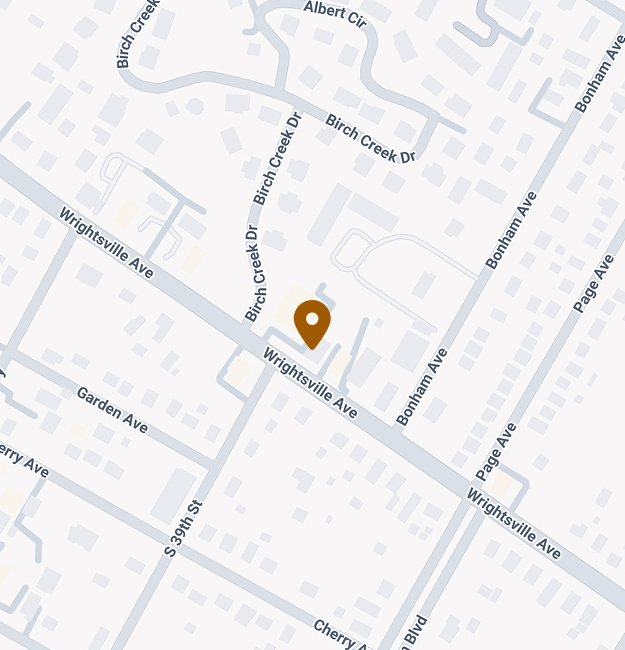Practical Guide: Appealing an HOA Architectural Review Committee Decision
Receiving a denial from your HOA’s Architectural Review Committee can feel discouraging, especially if your planned improvements are important to you and your family. But a denial doesn’t necessarily mean your project is permanently off the table. In some cases, Wilmington homeowners have options to appeal the decision within the HOA’s internal process, potentially turning a “no” into a “yes.”
Understanding your HOA’s specific appeals procedure, knowing how to communicate effectively with your board, and presenting a clear, fact-based argument are essential first steps toward reversing an architectural denial. This practical guide walks you through the appeal process, helping you present your case professionally, thoroughly, and persuasively.
If you’re unsure how to start or need assistance navigating a complex HOA issue, the Law Office of Bradley Coxe is here to support homeowners throughout Wilmington, New Hanover, and Brunswick Counties. Give us a call at 910-834-8400—we may be able to help protect your property rights and achieve your home improvement goals.
Before resorting to courts or external remedies, homeowners should generally try to work things out within the HOA’s established processes. Most HOAs have some form of appeal or reconsideration procedure for architectural decisions, even if it’s not formally called an “appeal.” Here are practical steps you can take to appeal or request a reevaluation of the denial:
1. Review the Denial Letter and Guidelines: Start by carefully reading the denial notice you received. The HOA should provide a clear reason for the denial, often referencing specific sections of the architectural guidelines or covenants. Compare this reason with your project plans and the community rules. Is the HOA’s interpretation correct? Sometimes, denials happen because of a misunderstanding or lack of information. Make sure you understand exactly why you were denied and whether that reason is valid under the written rules. It can help to highlight the relevant sections in your copy of the CC&Rs – Covenants, Conditions & Restrictions in HOAs or guidelines. Being well-informed is often an important first step to formulating a response.
2. Talk Informally and Gather Input: It’s often helpful to have an informal conversation with a member of the Architectural Review Committee (ARC) or a board member. Politely ask for more detail on the decision. You might find out if there were specific concerns (for example, “the committee felt your paint color was too bright compared to others on the street”). Sometimes committee members can also suggest modifications that would make the proposal acceptable. This is also an opportunity to clear up any miscommunication – perhaps the committee denied the project because they misunderstood it. Approach this conversation in a non-confrontational, polite, and neighborly way: you’re seeking insight and willing to listen. Not only can this informal step provide clarity, it also shows the HOA that you’re cooperative, which may make them more inclined to work with you on a solution.
3. Check for an Internal Appeals Process: Many HOAs outline an appeals or resubmission process in their guidelines or bylaws. Look for any mention of what a homeowner can do if a request is denied. Some HOAs allow you to appeal to the board of directors if an architectural committee (a subset of the board or separate committee) issued the denial. This might involve writing a letter to the board within a certain timeframe. Other HOAs may invite you to submit a revised application that addresses the issues from the first denial. Follow any specific procedure if one exists. For example, you may need to notify the property manager or HOA secretary in writing that you are appealing the decision, and then attend the next board meeting to state your case. It’s important to adhere to any deadlines given – if the HOA says you have 30 days to appeal, be sure to act within that window.
4. Prepare a Convincing Appeal Submission: Treat the appeal like you are making your case from scratch, but with additional information to overcome the HOA’s concerns. In writing (and verbally if you get to present in person), address each reason for denial with facts and solutions. For instance, if you were denied because of a specific guideline, demonstrate how you plan to meet that guideline or why an exception is justified. You might include revised drawings, alternative materials, or compromises (like extra landscaping to screen a shed that was deemed too visible). If the denial was due to a perceived conflict with the rules, cite the exact language of the rule and explain your interpretation. It can help to reference other approvals in the neighborhood: “Three houses on my street have similar fence designs; I’ve included photos of those. My design is in line with what’s already in our community.” By providing photographs, samples, or expert opinions (e.g., a letter from a contractor or architect stating the improvement will look professional and meet code), you give the HOA tangible reasons to reconsider. Keep your tone respectful and focus on facts, not emotions.
5. Request a Meeting or Hearing: If possible, request an opportunity to discuss your appeal in person with the decision-makers. Many HOAs will allow an owner to attend a board or committee meeting to explain their position. This can be more effective than paper alone, as it lets you directly answer questions and show your willingness to cooperate. When you attend, remain calm and professional. Acknowledge the HOA’s concerns (“I understand the committee was worried my addition might be too large…”), and then present your counterpoints or revised proposal (“…so I have reduced the size by 20% and will paint it to match the house, as shown in these new sketches”). Bring copies of all relevant documents for each member. During the meeting, be concise but thorough. Afterwards, ask when you can expect a decision on the appeal or if any further action is needed from you.
6. Be Willing to Compromise: Successful appeals often involve some give-and-take. Even if you feel your original plan should have been approved, consider if there are minor tweaks that would satisfy the HOA. Perhaps you can agree to use a different shade of color, slightly alter the design, or add landscaping to buffer the change. Let the HOA know you are flexible and interested in finding a solution that works for everyone. For example, if an HOA objects to the height of a fence, you might offer to meet them in the middle – build it a bit lower than you wanted, but taller than originally allowed. This compromise approach can turn a “no” into a “yes.” From the HOA’s perspective, it’s easier to approve a modified request that addresses their concerns rather than completely reversing their stance with no changes. Showing a spirit of compromise can also improve your relationship with the board or committee for future interactions. Remember, the goal is to get your improvement approved in a form you can live with, even if it’s not 100% of what you first envisioned.
7. Get the Final Decision in Writing: After you go through the appeal or reconsideration process, make sure the HOA provides the outcome in writing. If they approve the request (great!), keep that approval letter in your records. If they uphold the denial, the written notice should ideally state that this is the final decision of the HOA on the matter. This letter could be important if you decide to pursue further legal action, as it documents that you exhausted the HOA’s internal remedies. It’s also useful to have a clear record of the HOA’s position – including any reasons they modified or added during the appeal.
By following these steps, many homeowners are able to resolve issues without escalating the dispute. You might find that the HOA, when presented with a well-prepared appeal, is willing to overturn or soften a denial – especially if you’ve demonstrated that your project truly aligns with the community’s interests or that the denial was based on a misinterpretation. Even if the answer remains “no,” you will have built a solid foundation for any future legal challenge by showing that you tried to work things out reasonably.
Taking the Next Step to Resolve Your HOA Architectural Denial
Successfully appealing an architectural denial often comes down to clear communication, detailed preparation, and a willingness to find common ground. By carefully following your HOA’s internal processes, gathering solid evidence, and presenting a thoughtful, professional appeal, you increase the likelihood of resolving the issue without needing to escalate further.
However, if you’ve tried the practical steps outlined above and still face resistance, you may benefit from professional guidance. At the Law Office of Bradley Coxe, we understand HOA regulations and architectural appeals, and we’re here to help Wilmington homeowners—including those in New Hanover and Brunswick Counties—navigate these challenges smoothly.
If you have questions about your architectural denial or need advice on the next steps, give us a call at 910-834-8400. Our team is ready to assist you in finding a fair resolution and getting your home improvement project back on track.



